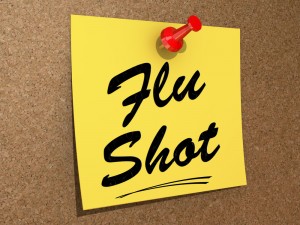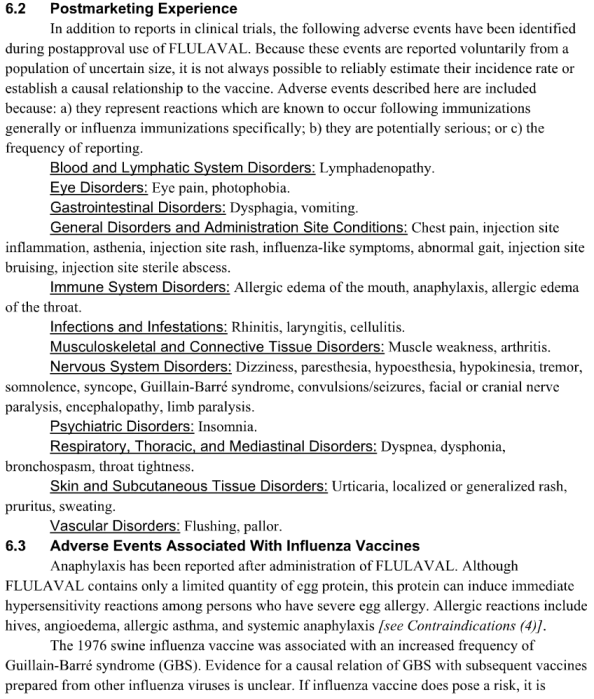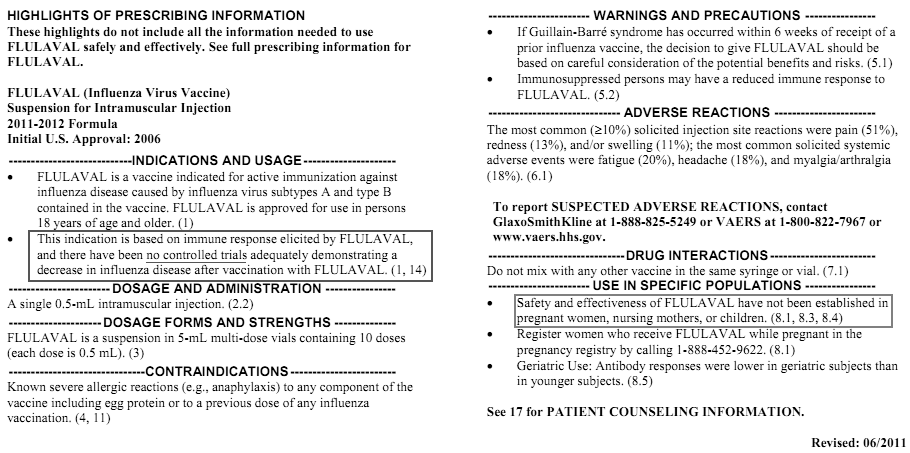All You Need To Know About the Flu Shot
Updated 12/28/15:
You can read more about the flu virus itself on the ‘What Is The Flu?’ post.
It has been stated, and many people believe, that the best way to prevent the flu is to get a flu shot. That concept is a load of nonsense! This mentality is like saying the best way to keep from getting shot is to wear a bullet proof vest.
The BEST way to prevent the flu is to avoid it altogether. Unfortunately, this isn’t always possible.
When I was in Iraq, we didn’t simply wear our “bullet-proof vest” in the traditional sense. We wore trauma plates, helmets, gloves, eye protection, hearing protection, etc. We wanted as much protection as possible. This should be the concept for the flu as well. We should support the immune system from every angle and in every way possible in order to equip our bodies with everything they need to prevent illness associated with the flu.
It seems that the idea of getting a flu shot each year stimulates a lot of emotion for some people.
I can’t tell you how many times I’ve heard patients tell me that the only time they’ve gotten the flu is when they’ve received the flu shot. The best thing we can do is arm ourselves with good education on the topic and let each patient decide for themselves. As always, if the benefits outweigh the risks then go for it. However, that is NOT the case for the flu shot!
So what is the flu vaccine and what is it supposed to do?
Many people believe that the flu shot is supposed to prevent them from getting the flu. It doesn’t work that way.
The intent of vaccination to build antibodies against an antigen which is presented to the body (injected, ingested, inhaled, etc). The antibodies will be able to fight the specific infection if ever exposed.
It is important to understand a little bit about the flu virus itself in order to understand the vaccine itself.
The flu vaccines are trivalent, meaning that they target 3 strains of the virus, or quadrivalent, targeting 4 different strains. Trivalent vaccines target 2 Influenza A strains (H1N1, H3N2) and 1 Influenza B strain. The quadrivalent vaccine targets 2 A’s and 2 B’s. There are 4 different types of flu shots:
- Traditional flu shot – intramuscular injection of particles of the flu virus that aren’t able to cause the flu
- High-dose flu shot – same thing but higher dose as the traditional. Approved for adults over 65.
- Intradermal flu shot – same thing as the traditional but goes just under the skin. Approved for adults 18-65.
- Nasal spray flu vaccine – this is a Live Attenuated Influenza Vaccine (LAIV). This is the actual virus but it has been weakened. Spray it up the nose. Approved for 2-49 years of age.
The World Health Organization (WHO) receives information from the Global Influenza Surveillance & Response System which ultimately determines the strains included in the annual vaccine. High yield candidate vaccine viruses are developed by collaboration of laboratories involved in developing reassortants and WHO Collaborating Centers (CCs). National Influenza Centers (NICs) collect specimens in their country and perform antigenic characterization. These results are sent to the WHO and is the basis for recommendations for the strains included in the annual influenza vaccination. Basically, it is a guessing game…
The problem that I have is that if they determine it is a different strain than predicted then why don’t they stop giving the shot. If they are wrong then the vaccine is absolutely useless. This makes no sense! Of course, they’ll say that there is ‘cross-reactivity’ among strains of flu.
How Is It Made?
Do you wonder what is actually being injected? I think that is important to understand exactly what you are getting when you get the flu shot.
The strains of flu that are identified in Asia in the spring are cultivated in chick embryos (eggs, this is why they won’t give you the flu shot if you are allergic to eggs) for a few weeks. Then, they inactivate the virus by adding formaldehyde, the same chemical that we have used to embalm things. Finally, they add thimerosal as a preservative (in some vaccines).
What is the world is thimerosal? It is an antiseptic and antifungal that is made with mercury. I don’t want to get too deep into the thimerosal debate but the Institute of Medicine (IOM) agreed that thiomerosal could be associated with neurodegenerative diseases and that its removal from childhood vaccines was beneficial. The bottom line is that we should totally avoid mercury. Period! It is toxic stuff!
How much mercury is in thimerosal? The package inserts for flu vaccines state that it is “less than 25 mcg of mercury per dose.” So is it 1 mcg or 24.99 mcg? This is 250 times HIGHER than the safe limit set by the EPA!
There are also other toxins in some of the flu vaccines:
- Aluminum — a neurotoxin that has been linked to Alzheimer’s disease
- Triton X-100 — a detergent
- Phenol (carbolic acid)
- Ethylene glycol (antifreeze)
- Betapropiolactone – a disinfectant
- Nonoxynol – used to kill or stop growth of STDs
- Octoxinol 9 – a vaginal spermicide
- Sodium phosphate
So, what is the harm to getting the flu shot?
The flu vaccine has actually been banned by countries in the past. That should tell us something!
Potentially serious reactions to the flu shot include (but are not limited to): allergic reaction to any of the ingredients; thrombocytopenia; neurologic disorders; encephalitis; Guillain-Barre Syndrome; mercury toxicity; acute illness
Here is a picture of the package insert from one of the vaccines (Flulaval) discussing the potential risks:
If this weren’t enough to make you think twice…
The 2009 H1N1 (swine flu) outbreak brought to light another adverse effect of the traditional flu vaccine. It can actually make you MORE susceptible to a different infection. How could this happen?
Flu vaccines can be immune suppressive. They divert the immune system to produce antibodies against a specific antigen. That is what it is supposed to do… make antibodies against the virus. But this activity diverts the immune resources and can leave you susceptible to infection from another virus or bacteria. This is part of the risk you are taking when you get a flu shot. You are trading the increased risk of another infection for possible protection against the flu.
In fact, during that swine flu outbreak in 2009, those that got the seasonal flu shot were twice as likely to get swine flu.
But does it work?
As stated above the flu shot is a total guess. But even if they do get it right there is still no evidence that it works. Study after study reveals the same conclusion that they do not prevent people from getting the flu and they do not prevent death. There is even some evidence that it can increase the risk of death is some patients.
The issue comes down to the difference between efficacy and effectiveness. Yes, the flu shot is efficacious. This means that it does work to increase antibodies against some parts of the flu virus. However, effectiveness is very different. Effectiveness means that it would decrease flu disease but that is simply not the case. But don’t take my word for it. Here is a statement from the package insert from the flu vaccine Flulaval:
” FLULAVAL is an influenza virus vaccine indicated for active immunization of adults 18 years of age and older against influenza disease caused by influenza virus subtypes A and type B contained in the vaccine. This indication is based on immune response elicited by FLULAVAL, and there have been no controlled trials demonstrating a decrease in influenza disease after vaccination with FLULAVAL.”
Then again, I can make up anything I want and write it down so here is a picture of the actual insert:
Did you read it? It states, right there in the package, that it has NOT been proven to be effective.
I don’t know what else to say.
Interestingly, that statement has since been removed from the package insert since that time. However, you can google the package insert and it will also tell you that it contains 25 mcg of mercury. I’m not making this stuff up.
If you still have doubts about what I’m saying here then maybe this will help:
- Archives of Pediatric & Adolescent Medicine, October 2008 – giving the flu shot to young children had no impact on doctors office visits nor hospitalizations related to the flu during two flu seasons. The researchers stated “significant influenza vaccine effectiveness could not be demonstrated for any season, age, or setting.”
- Lancet, Aug 2008 – flu vaccination did NOT decrease risk of developing pneumonia in older people.
- American Journal of Respiratory and Critical Care Medicine, Sep 2008 – “The 51% reduction in mortality with vaccination initially observed in patients with pneumonia who did not have influenza was most likely a result of confounding. Previous observational studies may have overestimated mortality benefits of influenza vaccination.”
- Lancet Infectious Diseases, Oct 2007 – “We conclude that frailty selection bias and use of non-specific endpoints such as all-cause mortality, have led cohort studies to greatly exaggerate vaccine benefits.”
- Cochrane Database of Systematic Reviews, 2006 – “Influenza vaccines are efficacious in children older than two years but little evidence is available for children under two. There was a marked difference between vaccine efficacy and effectiveness. That no safety comparisons could be carried out emphasizes the need for standardization of methods and presentation of vaccine safety data in future studies. It was surprising to find only one study of inactivated vaccine in children under two years, given recent recommendations to vaccinate healthy children from six months old in the USA and Canada. If immunization in children is to be recommended as public-health policy, large-scale studies assessing important outcomes and directly comparing vaccine types are urgently required.” These studies included 260,000 children age 6-23 months.
- Cochrane Database of Systematic Reviews, 2010 – “No effect was shown for specific outcomes: laboratory-proven influenza, pneumonia and death from pneumonia. An effect was shown for the non-specific outcomes of ILI, GP consultations for ILI and all-cause mortality in individuals >/= 60. These non-specific outcomes are difficult to interpret because ILI includes many pathogens, and winter influenza contributes < 10% to all-cause mortality in individuals >/= 60. The key interest is preventing laboratory-proven influenza in individuals >/= 60, pneumonia and deaths from pneumonia, and we cannot draw such conclusions.The identified studies are at high risk of bias.Some HCWs remain unvaccinated because they do not perceive risk, doubt vaccine efficacy and are concerned about side effects. This review did not find information on co-interventions with HCW vaccination: hand washing, face masks, early detection of laboratory-proven influenza, quarantine, avoiding admissions, anti-virals, and asking HCWs with ILI not to work. We conclude there is no evidence that vaccinating HCWs prevents influenza in elderly residents in LTCFs. High quality RCTs are required to avoid risks of bias in methodology and conduct, and to test these interventions in combination.”
- Cochrane Database of Systematic Reviews, 2010 – 4% of unvaccinated vs 1% of vaccinated persons devoloped flu like symptoms “In the relatively uncommon circumstance of vaccine matching the viral circulating strain and high circulation.” However, under normal circumstances, the numbers were 2% and 1%. They went on to say that vaccination had no effect on hospitalization or complication rates. However, there was an additional 1.6 cases of Guillain-Barre Syndrome per 1 million vaccinations. They also discussed that the benefits of immunization may be inflated as most of the studies reviewed were funded by flu vaccine manufacturers and “The review showed that reliable evidence on influenza vaccines is thin but there is evidence of widespread manipulation of conclusions and spurious notoriety of the studies. The content and conclusions of this review should be interpreted in light of this finding.”
- Cochrane Database of Systematic Reviews, 13 March 2013 – Reviews 90 reports of 116 studies comparing the effect of influenza vaccine with either placebo or no immunization. 69 reports were clinical trials including over 70,000 people. 27 reports were cohort studies including over 8 million (8,000,000) people. 23 reports were conducted during pregnancy including 1.6 million (16,000,000) mother-child couples. Their conclusion: “The preventive effect of parenteral inactivated influenza vaccine on healthy adults is small: at least 40 people would need vaccination to avoid one ILI case (95% confidence interval (CI) 26 to 128) and 71 people would need vaccination to prevent one case of influenza (95% CI 64 to 80). Vaccination shows no appreciable effect on working days lost or hospitalization.”[23]
- Medscape – “The rationale for flu immunization as a national health priority is that influenza is a disease with serious complications, such as pneumonia, hospitalization, and death. If the reason for influenza vaccination is that flu is such a serious disease, then the relevant outcomes are whether vaccination improves morbidity and mortality from flu. However, after decades of vaccine use, it is hard to detect any public health impact. This is in stark contrast to other routine vaccinations, such as polio and Haemophilus influenzae type b, where introduction of the vaccine led to obvious decline of the disease.”[24]
- Cochrane Database of Systematic Reviews, 15 August 2012 – This review showed efficacy of the vaccine but discussed the differences between efficacy and effectiveness. They did note significant side effects as stated: “influenza vaccines were associated with serious harms such as narcolepsy and febrile convulsions.” “This review includes trials funded by industry. An earlier systematic review of 274 influenza vaccine studies published up to 2007 found industry-funded studies were published in more prestigious journals and cited more than other studies independently from methodological quality and size. Studies funded from public sources were significantly less likely to report conclusions favourable to the vaccines. The review showed that reliable evidence on influenza vaccines is thin but there is evidence of widespread manipulation of conclusions and spurious notoriety of the studies. The content and conclusions of this review should be interpreted in the light of this finding.”[25]
62% of healthcare workers do NOT get their flu shot!
They don’t get them for a few reasons. They include: they didn’t believe the flu shot worked; they felt that their immune system was strong enough to fight of the flu; and concern about side effects. I believe we should lead by example.
If our healthcare workers (doctors, nurses, etc) aren’t getting the flu shot then why should you? That question has been asked and there is an active movement to REQUIRE health care workers to receive the flu vaccination.
So, it may not work but why not get it anyway?
We discussed the possible mercury exposure due to the preservative thimerosol. We also discussed the fact that during the swine flu epidemic of 2009 you were twice as likely to get the swine flu. A study of the incidence of Guillain-Barre Syndrome (GBS) following the 2009-2010 swine flu epidemic showed a 57% increased risk of GBS in those who received the vaccine. It should be noted that the incidence of GBS is very low so a 57% increased risk is still a very small number. However, this is a potentially very serious condition that simply cannot be minimized.
You can read more on this post, or this post.
So, the risks of the flu shot may outweigh the benefits. The CDC says that the best thing you can do to prevent the flu is get the flu shot.
If that isn’t true then what should you do? Read the post on How To Prevent & Treat The Flu.
References:
- http://www.nia.nih.gov/health/publication/flu-get-shot
- http://en.wikipedia.org/wiki/Thiomersal
- http://www.fda.gov/BiologicsBloodVaccines/SafetyAvailability/VaccineSafety/UCM096228
- http://www.epa.gov/iris/subst/0073.htm
- http://www.myhealingpath.com/page/4370676
- http://pages.vassar.edu/viva/?p=657
- http://onlinelibrary.wiley.com/doi/10.1111/j.1525-1497.2006.00325.x/abstract
- http://articles.mercola.com/sites/articles/archive/2010/05/15/australia-bans-flu-vaccine.aspx
- http://articles.mercola.com/sites/articles/archive/2008/11/25/does-the-flu-shot-even-work.aspx
- http://articles.mercola.com/sites/articles/archive/2010/04/06/could–the-us-surgeon-general-be-the-real-cause-of-massive-1918-flu-deaths.aspxhttp://us.gsk.com/products/assets/us_flulaval.pdf
- http://www.ncbi.nlm.nih.gov/pubmed?orig_db=PubMed&cmd=Search&term=%22Archives+of+pediatrics+%26+adolescent+medicine%22[Jour]+AND+2008%2F10[pdat]+AND+Szilagyi[author]
- http://articles.mercola.com/sites/articles/archive/2010/05/01/regular-flu-vaccine-actually-increases-risk-of-swine-flu.aspx
- http://www.ncbi.nlm.nih.gov/pubmed?orig_db=PubMed&cmd=Search&term=%22Lancet%22[Jour]+AND+398[page]+AND+2008[pdat]
- Eurich DT, Marrie TJ, Johnstone J, Majumdar SR. Mortality reduction with influenza vaccine in patients with pneumonia outside “flu” season: pleiotropic benefits or residual confounding? Am J Respir Crit Care Med. 2008 Sep 1;178(5):527-33. doi: 10.1164/rccm.200802-282OC. Epub 2008 Jun 12.
- Simonsen L, Taylor RJ, Viboud C, Miller MA, Jackson LA. Mortality benefits of influenza vaccination in elderly people: an ongoing controversy. Lancet Infect Dis. 2007 Oct;7(10):658-66.
- Smith S, Demicheli V, Di Pietrantonj C, Harnden AR, Jefferson T, Matheson NJ, Rivetti A. Vaccines for preventing influenza in healthy children. Cochrane Database Syst Rev. 2006 Jan 25;(1):CD004879.
- http://articles.mercola.com/sites/articles/archive/2009/09/26/Flu-Vaccine-Exposed.aspx#_edn3
- Thomas RE, Jefferson T, Lasserson TJ. Influenza vaccination for healthcare workers who work with the elderly. Cochrane Database of Systematic Reviews.2010 Feb 17;(2):CD005187. doi: 10.1002/14651858.CD005187.pub3.
- Jefferson T, Di Pietrantonj C, Rivetti A, Bawazeer GA, Al-Ansary LA, Ferroni E. Vaccines for preventing influenza in healthy adults. Cochrane Database of Systematic Reviews 2010, Issue 7. Art. No.: CD001269. DOI: 10.1002/14651858.CD001269.pub4.
- Wise ME, et al. Guillain-Barre syndrome during the 2009-2010 H1N1 influenza vaccination campaign: population-based surveillance among 45 million Americans. Am J Epidemiol. 2012 Jun 1;175(11):1110-9.
- http://www.thenewamerican.com/usnews/health-care/item/13030-health-officials-push-flu-shots-but-some-question-their-safety
- http://www.bewellbuzz.com/headline/flu-shots-danger/
- Jefferson, T; Di Pietrantonj, C; Rivetti, A; Bawazeer, GA; Al-Ansary, LA; Ferroni, E (13 March 2014). “Vaccines for preventing influenza in healthy adults.”. The Cochrane database of systematic reviews 3: CD001269. doi:10.1002/14651858.CD001269.pub5. PMID 24623315
- http://www.medscape.com/viewarticle/855937
- Jefferson T, Rivetti A, Di Pietrantonj C, Demicheli V, Ferroni E. Vaccines for preventing influenza in healthy children. The Cochrane Database of Systematic Reviews 2012. Issue 8. Art. No.: CD004879. DOI:10.1002/14651858.CD0048 79.pub4.
- http://www.ncbi.nlm.nih.gov/pubmed/25119609









